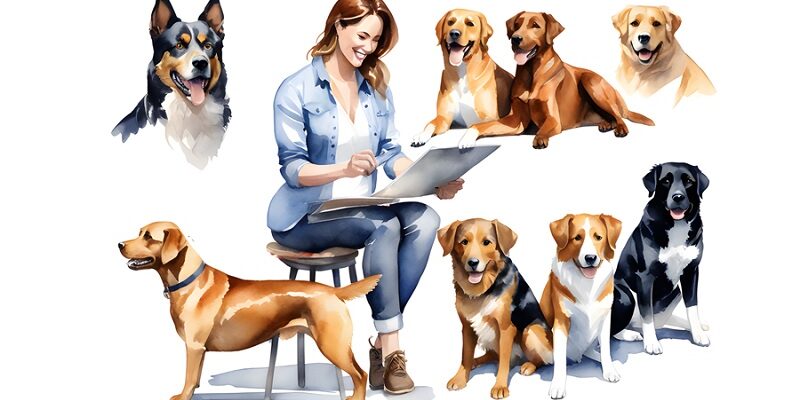
The Spectrum of Canine Personalities
Dogs, much like humans, come with a diverse range of personalities, temperaments, and tendencies. While some of this diversity can be attributed to individual character, a significant portion is influenced by breed-specific traits. For instance, a Border Collie might have an innate herding instinct, while a Beagle’s nose might lead it on scent-driven adventures. Recognising these breed-specific traits is the first step towards effective training.
When it comes to dog training in Scotland, understanding the nuances of different breeds is paramount. It’s not about labelling certain breeds as ‘difficult’ or ‘easy’ but rather about appreciating their unique strengths and challenges. By doing so, we can tailor our training techniques to align with their natural instincts and tendencies.
Recognising Breed-Specific Needs
Every breed has its own set of needs and challenges. While some dogs might require rigorous physical activity, others might need more mental stimulation. Similarly, while some breeds might be more independent, others might thrive on companionship and close interaction.
Working Breeds: Breeds like German Shepherds, Border Collies, and Labradors were bred for specific tasks such as herding, guarding, or retrieving. They often have high energy levels and require both physical and mental stimulation. Tailored training for these breeds might involve task-oriented activities that channel their energy productively.
Toy and Companion Breeds: Breeds like Shih Tzus, Pomeranians, and Chihuahuas were primarily bred for companionship. They might not have the same energy levels as working breeds but can be equally intelligent and responsive. Their training might focus more on socialisation and basic obedience.
Adapting Training Techniques
Once we understand the breed-specific needs, the next step is to adapt our training techniques accordingly. This doesn’t mean reinventing the wheel for every breed but rather making subtle adjustments to ensure the training is effective and enjoyable for the dog.
Positive Reinforcement: While this technique works across the board, the type of reward might vary. For instance, a retriever might be more motivated by fetch games, while a scent hound might respond better to treat-based rewards.
Distraction Training: For breeds that are easily distracted by scents or movements, training in a controlled environment before gradually introducing distractions can be beneficial.
Patience and Persistence: Some breeds might take longer to pick up certain commands. Instead of getting frustrated, it’s essential to remain patient and consistent. Celebrate small victories and remember that every dog learns at its own pace.
The Role of Socialisation
Socialisation is a crucial aspect of dog training, irrespective of the breed. However, the approach might vary. For breeds that are naturally wary of strangers or other dogs, early and positive exposure can make a world of difference. On the other hand, for breeds that are overly friendly, teaching boundaries might be the focus.
It’s also worth noting that socialisation isn’t just about interacting with other dogs. It’s about exposing the dog to various environments, sounds, and experiences. This holistic approach ensures that the dog is well-adjusted and confident in different situations.
Training a dog is as much an art as it is a science. While understanding breed-specific traits provides a foundation, it’s essential to remember that every dog is an individual. By combining breed knowledge with a keen observation of individual personalities, we can tailor our training techniques for the best results. After all, the goal is to have a happy, confident, and well-trained canine companion.







